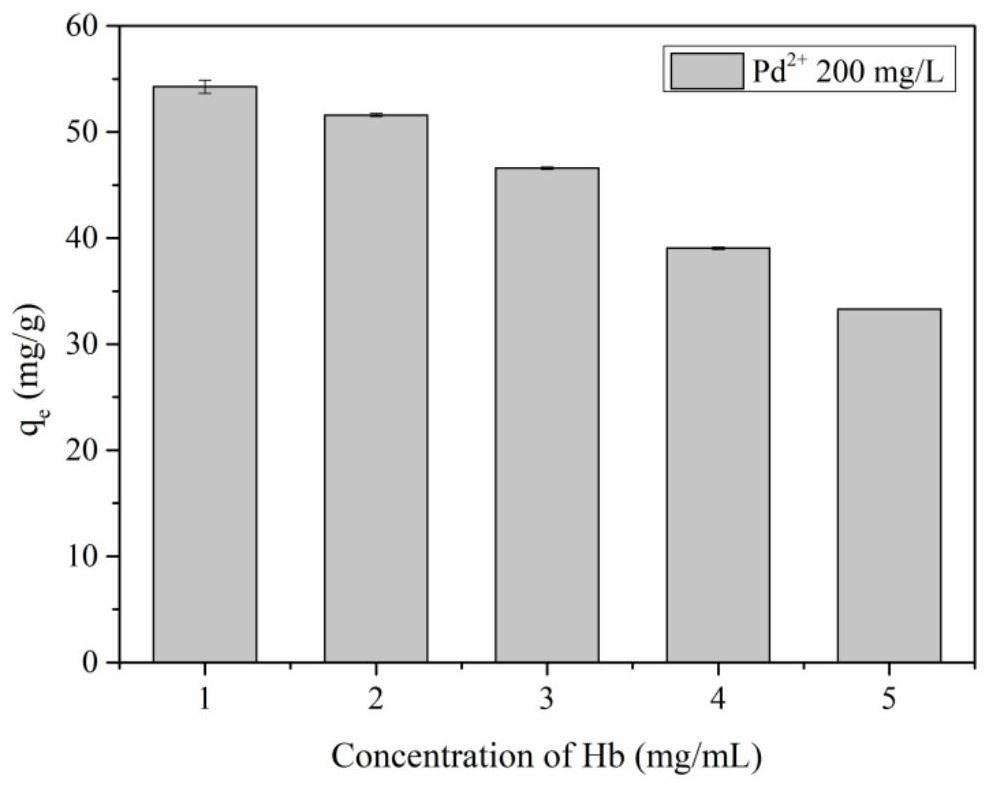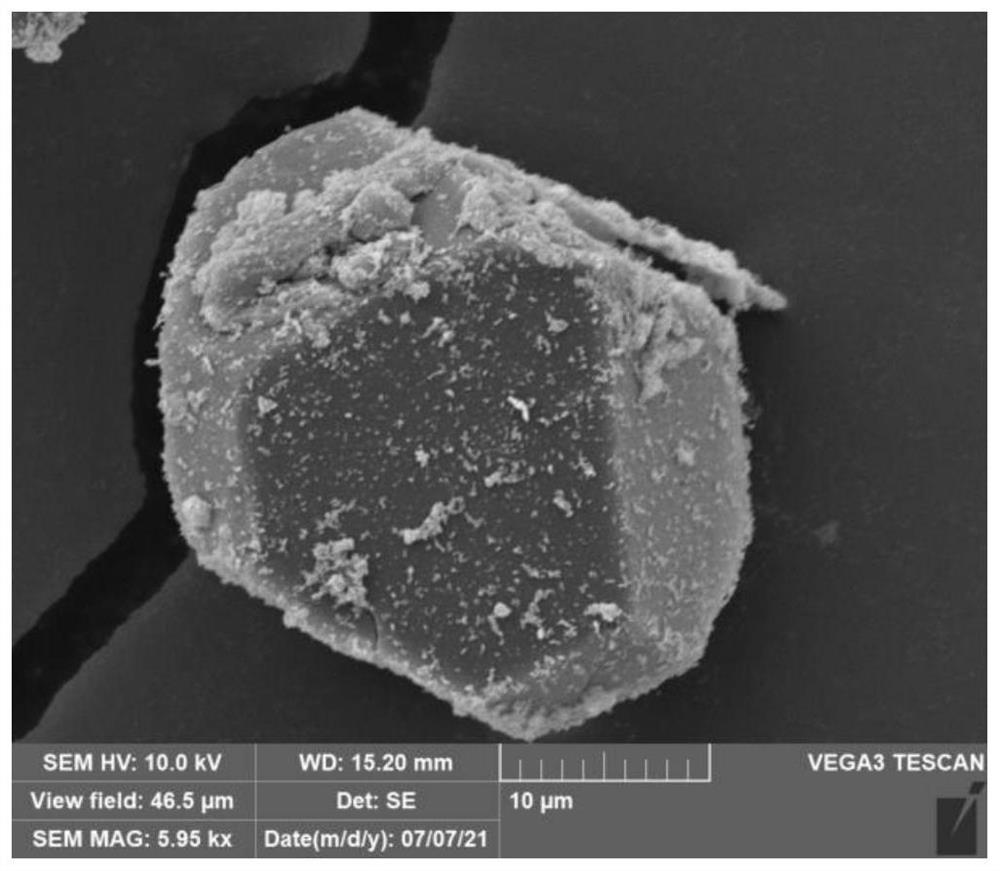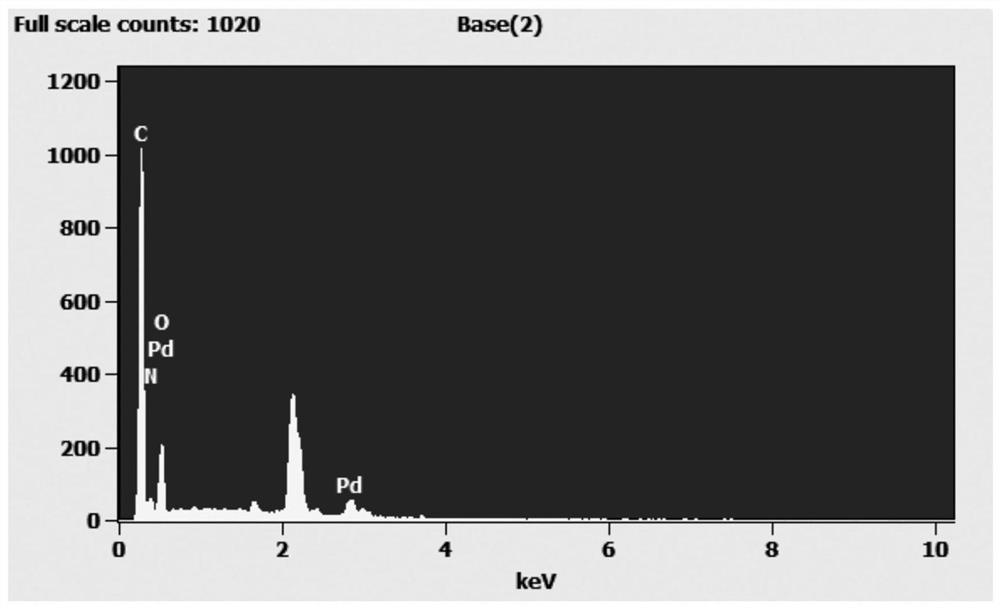Method for preparing nano-palladium catalyst by using protein assembly
A protein and assembly technology, applied in chemical instruments and methods, physical/chemical process catalysts, organic compounds/hydrides/coordination complex catalysts, etc., can solve the problem of uncontrollable nano-palladium particle size, high cost of preparation technology, Problems such as high energy consumption, to achieve the effect of improving size uniformity, improving catalytic efficiency, and improving dispersion
- Summary
- Abstract
- Description
- Claims
- Application Information
AI Technical Summary
Problems solved by technology
Method used
Image
Examples
Embodiment 1
[0038] Embodiment 1 (hemoglobin crystal prepares nano-palladium catalyst)
[0039] The first step is the preparation of hemoglobin crystals.
[0040] 1) Mix the hemoglobin solution and the crystallizing agent solution at a ratio of 1:1 to obtain a hemoglobin crystallizing solution.
[0041] The crystallizing agent solution is: 20% polyethylene glycol, 0.2M succinic acid, pH 7.0.
[0042] 2) The hemoglobin crystallisation solution was allowed to stand at 20°C for 1 to 3 days.
[0043] 3) Collect hemoglobin crystals by centrifugation and resuspend the hemoglobin crystals with a crystallizing agent solution to obtain a hemoglobin crystal suspension.
[0044] 4) Mix the hemoglobin crystal suspension with the glutaraldehyde solution to obtain cross-linked hemoglobin crystals.
[0045] 5) Wash the hemoglobin crystals with deionized water and freeze-dry to obtain the final cross-linked hemoglobin crystals.
[0046] Step 2, adding the hemoglobin crystals into deionized water to di...
Embodiment 2
[0064] Embodiment 2 (hemoglobin assembly prepares nano-palladium catalyst)
[0065] Step 1, preparation of hemoglobin assembly.
[0066] 1) Mix the hemoglobin solution and the precipitant solution at a ratio of 1:1 to obtain a hemoglobin assembly solution.
[0067] The precipitant solution is: 20% polyethylene glycol, pH 7.0.
[0068] 2) The hemoglobin assembly solution was allowed to stand at 20°C for 1 to 3 days.
[0069] 3) Collect the hemoglobin assembly by centrifugation and resuspend the hemoglobin assembly with a precipitant solution to obtain a hemoglobin assembly suspension.
[0070] 4) Mixing the hemoglobin assembly suspension with the glutaraldehyde solution to obtain a cross-linked hemoglobin assembly.
[0071] 5) Wash the hemoglobin assembly with deionized water, and obtain the final cross-linked hemoglobin assembly after freeze-drying.
[0072] Step 2, adding the hemoglobin assembly into deionized water to disperse evenly to obtain a hemoglobin assembly suspe...
Embodiment 3
[0087] Embodiment 3 (the preparation of nano-palladium catalyst by lysozyme crystal)
[0088] The first step is the preparation of lysozyme crystals.
[0089] 1) Mix the lysozyme solution and the crystallizing agent solution at a ratio of 1:1 to obtain a lysozyme crystallization solution.
[0090] The crystallizing agent solution is: 3%-6% NaCl.
[0091] 2) The lysozyme crystallization solution was allowed to stand at 4°C for 1 to 3 days.
[0092] 3) Collect lysozyme crystals by centrifugation and resuspend the lysozyme crystals with a crystallizing agent solution to obtain a lysozyme crystal suspension.
[0093] 4) Mix the lysozyme crystal suspension with the glutaraldehyde solution to obtain cross-linked lysozyme crystals.
[0094] 5) Wash the lysozyme crystals with deionized water and freeze-dry to obtain the final cross-linked lysozyme crystals.
[0095] Step 2: Add the lysozyme crystals into deionized water and disperse them uniformly to obtain a lysozyme crystal susp...
PUM
| Property | Measurement | Unit |
|---|---|---|
| Size | aaaaa | aaaaa |
Abstract
Description
Claims
Application Information
 Login to View More
Login to View More - R&D
- Intellectual Property
- Life Sciences
- Materials
- Tech Scout
- Unparalleled Data Quality
- Higher Quality Content
- 60% Fewer Hallucinations
Browse by: Latest US Patents, China's latest patents, Technical Efficacy Thesaurus, Application Domain, Technology Topic, Popular Technical Reports.
© 2025 PatSnap. All rights reserved.Legal|Privacy policy|Modern Slavery Act Transparency Statement|Sitemap|About US| Contact US: help@patsnap.com



